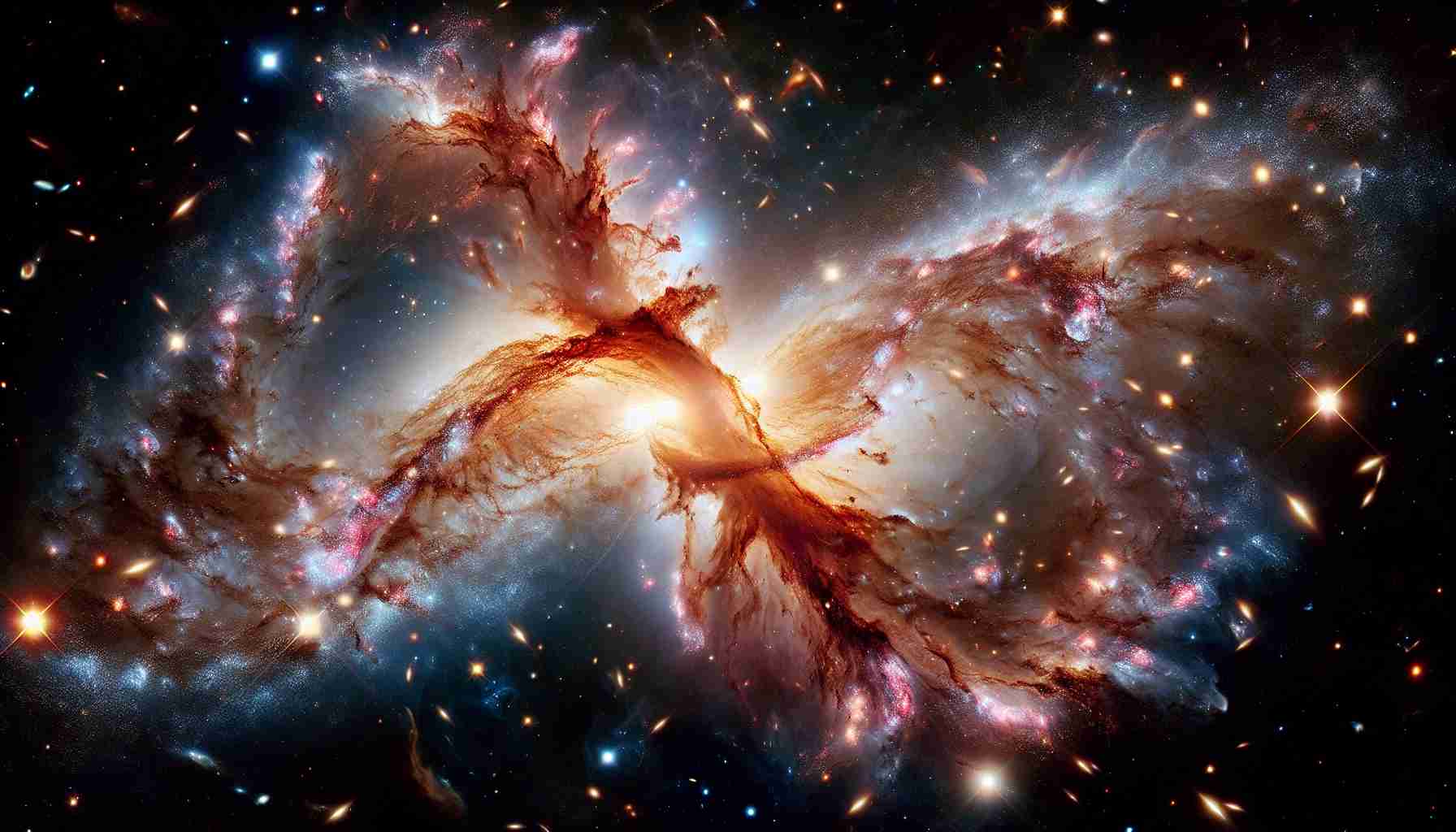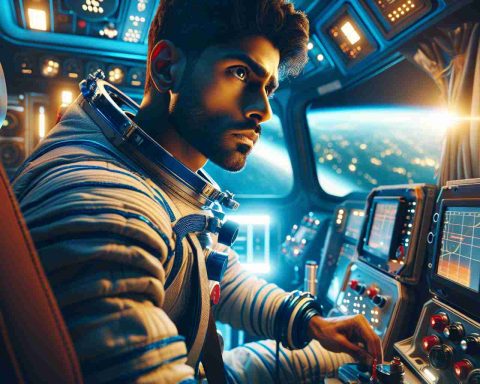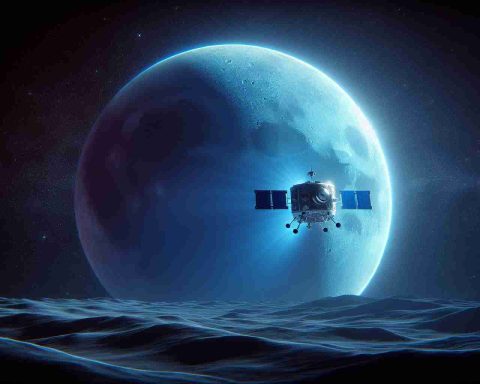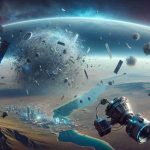- The galaxies IC 2163 and NGC 2207 are undergoing a spectacular collision, resulting in unique cosmic formations.
- Gravitational interactions between the galaxies are sparking a high rate of star formation, with about two dozen Sun-like stars being created annually.
- Different telescopes highlight various aspects of the star formation process, revealing vivid colors related to newly born stars and cosmic events.
- At least seven supernovae have been observed in this region, contributing to the continuous cycle of star creation.
- Future trajectories may lead to a merger between the two galaxies, which could further enhance stellar activity before resources dwindle.
- This dynamic process exemplifies the universe’s ongoing cycle of chaos and calm, continually reshaping cosmic structures.
In the grand theater of the universe, galaxies engage in spectacular cosmic collisions that sculpt their very forms. Witness the stunning interplay between IC 2163 and NGC 2207, two spiral galaxies caught in a gravitational embrace. Recent images from the James Webb and Hubble Space Telescopes reveal their striking, blood-red cores that resemble wide-open eyes, reflecting millions of years of turbulent history.
As these colossal galaxies edge closer, gravitational forces elongate their arms and ignite a frenzy of star formation. In an astounding twist, IC 2163 and NGC 2207 are birthing two dozen Sun-like stars annually—a striking contrast to our Milky Way’s modest output of just a few. This extraordinary surge results from cosmic interactions that compress interstellar gas and dust into stellar nurseries, where brilliant new stars flicker to life.
Hubble’s captivating blue hues spotlight these newborn stars, while Webb’s images pop with pink and white, showcasing regions of high activity. The scene is further energized by the aftermath of at least seven supernovae that have illuminated this galactic stage over the decades, reshaping their environments and fueling the cycle of star creation.
As the story of IC 2163 and NGC 2207 unfolds, their trajectories may lead to a dazzling merger, igniting even more stellar activity. However, this cosmic vigor won’t last forever; eventually, the gas that fuels their creativity will dwindle, turning this vibrant spectacle into a serene cosmic tableau.
This celestial ballet teaches us that the universe is a grand tapestry, woven from episodes of chaos and calm, eternally reshaping the fabric of reality. Explore these wonders and uncover the secrets of our dynamic universe!
A Cosmic Dance: The Future of IC 2163 and NGC 2207
The Collision of Two Celestial Giants
In a breathtaking cosmic display, two spiral galaxies, IC 2163 and NGC 2207, are on a collision course that has become a focal point of astronomical study. Recent observations from the James Webb Space Telescope and the Hubble Space Telescope have revealed remarkable details about this pair, with their swirling processes and vibrant star formation providing insights into the life cycles of galaxies.
Key Highlights:
– Stellar Formation Surge: These galaxies are experiencing a prolific phase of star formation, birthing around two dozen Sun-like stars each year, in stark contrast to the Milky Way’s much lower rate.
– Impressive Spectra: The interaction of IC 2163 and NGC 2207 creates a stunning visual with Hubble showcasing blue hues representing newborn stars, while Webb highlights intense activity with pink and white colors.
– Supernova Activity: Over the years, significant supernova events (at least seven) have contributed to altering the galactic environment, enriching the surrounding space and driving more star production.
– Merger Predictions: Current trajectories suggest that if these galaxies continue their path, they may eventually merge, potentially triggering an unprecedented wave of star formation.
Notable Trends and Innovations:
The study of IC 2163 and NGC 2207 highlights the following trends:
– Increased Use of Groundbreaking Technology: Advances in telescope technology, especially with instruments like the James Webb Space Telescope, allow astronomers to observe these galactic phenomena in unprecedented detail.
– Deeper Understanding of Galactic Evolution: The ongoing research offers essential insights into the dynamics of galaxy collisions and mergers, advancing our knowledge of cosmic evolution.
Thematic Insights:
– Cosmic Interactions: The gravitational interplay between these galaxies showcases the profound effects of cosmic forces in shaping the universe.
– Fuel for Star Formation: The compression of interstellar gas and dust due to gravitational interactions leads to the creation of new stars, essentially acting as stellar nurseries.
– Finite Resources: Ultimately, as their gas reserves deplete, the ongoing star formation frenzy will transition into a quieter cosmic existence.
Essential Questions:
1. What role do supernovae play in star formation?
– Supernovae contribute to the recycling of stellar materials back into interstellar space, enriching the gas clouds that form new stars and facilitating further star formation processes.
2. How does the interaction between IC 2163 and NGC 2207 compare to other galaxy collisions?
– Galaxy collisions exhibit varied outcomes; some lead to rapid star formation like in this case, while others can result in the slowing or cessation of star formation, depending on the specific dynamics of the interaction.
3. What can we learn from the merger of IC 2163 and NGC 2207 for our understanding of the Milky Way?
– By studying such cosmic events, astronomers gain insights into the potential future of our own galaxy, including how it might evolve during its predicted collision with the Andromeda Galaxy.
For more information about our universe and the cosmos, visit NASA.

















